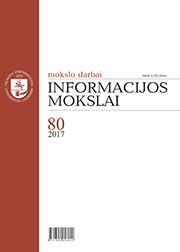Seksistinių nuostatų reikšmė seksualinio priekabiavimo atpažinimui
The Relationship Between Sexism and the Perception of Sexual Harassment in the Lithuanian Sample
Author(s): Kristina Žardeckaitė-Matulaitienė, Monika ČeponytėSubject(s): Gender Studies, Evaluation research, Studies in violence and power, Victimology
Published by: Vilniaus Universiteto Leidykla
Keywords: sexual harassment; perception of sexual harassment; sexism; sexist attitudes; gender differences;
Summary/Abstract: Sexual harassment is one of the most commonly experienced forms of sex-based discrimination. Over 55 percent of women in Europe and over 35 percent of women in Lithuania endure any form of sexual harassment since the age of 15 (European Union Agency for Fundamental Rights survey 2014). However, despite the frequent sexual harassment experience, in the past six years, only four sexual harassment complaints had been filed in Lithuania and to this day there is no information on men’s sexual harassment experience. According to the research, the lack of sexual harassment data and the low number of complaints can be related to the differences in perception of this phenomenon, which leads to a poor recognition of sexual harassment. There is a lack of data on the perception of sexual harassment and its related factors in Lithuania; therefore, the purpose of the study is to assess the relationship between sexist attitudes, gender, age, socioeconomic status and the recognition of sexual harassment of Lithuanian men and women. The research consisted of 345 participants (98 men and 247 women). The average age was 27.1 years (SD=8.478). Fourteen self-report vignettes were created based on the Bursik (1992) vignettes and consultations with the Office of the Equal Opportunities Ombudsperson to measure the participants’ perception of a hostile environment (Cronbach α 0.804) and quid pro quo (Cronbach α 0.728) sexual harassment. Sexist attitudes were measured using the Ambivalent Sexism Inventory (Glick, Fiske 1996) (Cronbach α 0.943). Questions related to participants’ age, gender and socioeconomic status were also included in this survey.
Journal: Informacijos mokslai
- Issue Year: 2017
- Issue No: 80
- Page Range: 61-80
- Page Count: 20
- Language: Lithuanian

